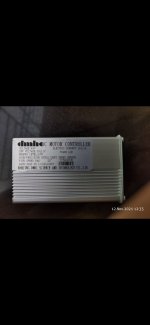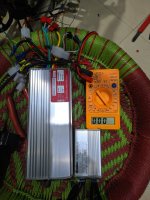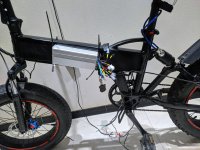Hi guys,
I'm new here. I have a 48v 250W bldc hub motor that stops working as soon as the voltage goes below 50V. If I charge my battery to full, it works perfectly alright ultill the battery reaches 50v or below. The battery power bars in the display starts fluctuating and the motor rarely gets any power.
I did check my charger voltage. Its isn't fluctuating nor my battery voltage is fluctuating. I did reset my BMS Too to see if this was a battery issue? But the issue remains the same.
I have a DMHC controller with TC480 Display that allows me to change the 24/36/48V. When I switch to 36V the bike again works on very minimum power. If I use acceleration the bike gradually picks up with very less power.
I'm totally clueless as to what is going on. I'm mostly assuming it's the controller which is at fault. The LVC ( Low voltage cutoff) for some reason has gone high suddenly. My bike was working fine untill last week when I tried to install a new ebike light but the 12V line had no power in it. The 12V line gets power only for 1 sec and them goes off. Can anyone help me with this. I'm attaching few photos for a better overview of the issue. Any help would be appreciated.
Thanks in advance
I'm new here. I have a 48v 250W bldc hub motor that stops working as soon as the voltage goes below 50V. If I charge my battery to full, it works perfectly alright ultill the battery reaches 50v or below. The battery power bars in the display starts fluctuating and the motor rarely gets any power.
I did check my charger voltage. Its isn't fluctuating nor my battery voltage is fluctuating. I did reset my BMS Too to see if this was a battery issue? But the issue remains the same.
I have a DMHC controller with TC480 Display that allows me to change the 24/36/48V. When I switch to 36V the bike again works on very minimum power. If I use acceleration the bike gradually picks up with very less power.
I'm totally clueless as to what is going on. I'm mostly assuming it's the controller which is at fault. The LVC ( Low voltage cutoff) for some reason has gone high suddenly. My bike was working fine untill last week when I tried to install a new ebike light but the 12V line had no power in it. The 12V line gets power only for 1 sec and them goes off. Can anyone help me with this. I'm attaching few photos for a better overview of the issue. Any help would be appreciated.
Thanks in advance






